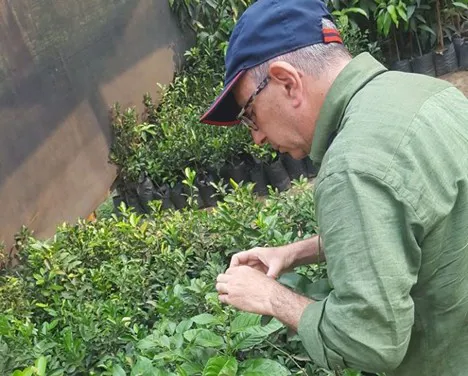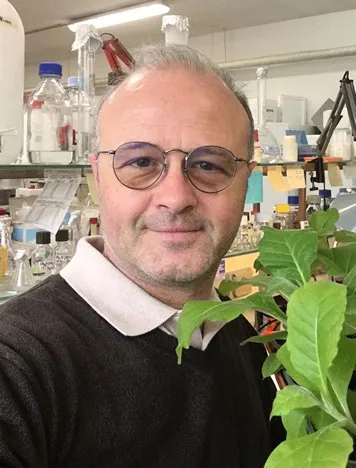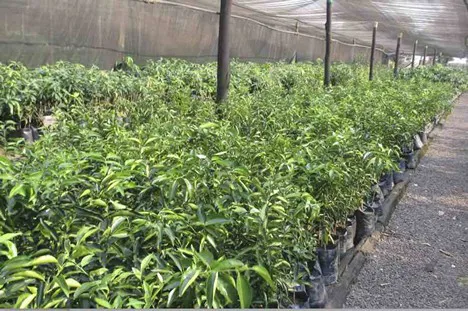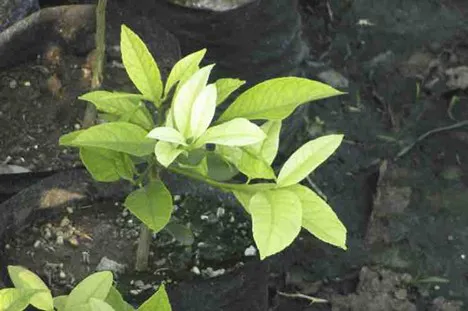The global citrus fruit industry is affected by the Citrus Tristeza Virus (CTV) and its symptoms. In March 2021, CNR researchers Vitantonio Pantaleo and Angelantonio Minafra presented a report analyzing some CTV isolates collected in Angola on the Virology Journal.
 Angelantonio Minafra
Angelantonio Minafra
"Checks to prevent the spreading of the infection should focus on nurseries in charge with clonal propagation via the grafting of citrus fruit species, as they sometimes act as a reservoir for aggressive CTV variants. Early identification and characterization of dangerous or emerging strains considerably helps prevent hotbeds in European and extra-European districts specialized in citrus fruit cultivation. This is particularly important for those regions where no dedicated certification programs are applied."
 According to what published by Pantaleo (in the photo) and Minafra "bicatenary RNA extracts (replica of RNA viral genomes) from sweet orange and tangerine samples taken from two places (a nursery and a commercial grove) in Angola were subjected to high-throughput sequencing. This technique was used to acquire - rapidly, in an non-specific manner and at a relatively contained cost per sample - a larger quantity of data on each viral isolate in plants before amplifying (RT-PCR) and sequencing single fragments of viral origin and confirm their presence in vegetable sources."
According to what published by Pantaleo (in the photo) and Minafra "bicatenary RNA extracts (replica of RNA viral genomes) from sweet orange and tangerine samples taken from two places (a nursery and a commercial grove) in Angola were subjected to high-throughput sequencing. This technique was used to acquire - rapidly, in an non-specific manner and at a relatively contained cost per sample - a larger quantity of data on each viral isolate in plants before amplifying (RT-PCR) and sequencing single fragments of viral origin and confirm their presence in vegetable sources."
But why is this work so important and what are its effects for Italy and the rest of the world?
"Processing sequencing data through bioinformatic applications and phylogenetic analyses enabled the identification of the multiple CTV variants present in the samples from Angola. It is important to notice that the molecular variants identified by the sequencing showed a similarity with both the severe strains already known (such as VT and resistance-breaking in Poncirus trifoliato), as well as with recently described strains emerging in other citrus cultivating regions, such as S1 (California) or New Clade (Uruguay). Unfortunately, this indicates how, in absence of diagnostic checks at all entry points, international trade is the main cause of the spreading of potentially devastating viral infections."
 Above and below: unchecked citrus buds and rootstocks - a dangerous source of CTV and other agents.
Above and below: unchecked citrus buds and rootstocks - a dangerous source of CTV and other agents.

Once again, globalization is the main culprit of the spreading of diseases that, due to insufficient checks, risk affecting entire economies based on agriculture.
"This experimentation was possible as part of an European project for the exchange and training of researchers (Virus free Fruit Nurseries, financed as part of Horizon 2020 Marie Skłodowska-Curie Research and Innovation Action), which enabled a fruitful collaboration between researchers from Istituto per la Protezione Sostenibile delle Piante del CNR in Bari, colleagues from Centro Nacional de Investigação Científica (Luanda) guided by researcher Aderito Pais da Cunha, and Instituto Superior Politécnico do Kuanza Sul (Sumbe)".
*Images provided by Dr Pantaleo
For further information:
angelantonio.minafra@ipsp.cnr.it
vitantonio.pantaleo@cnr.it
